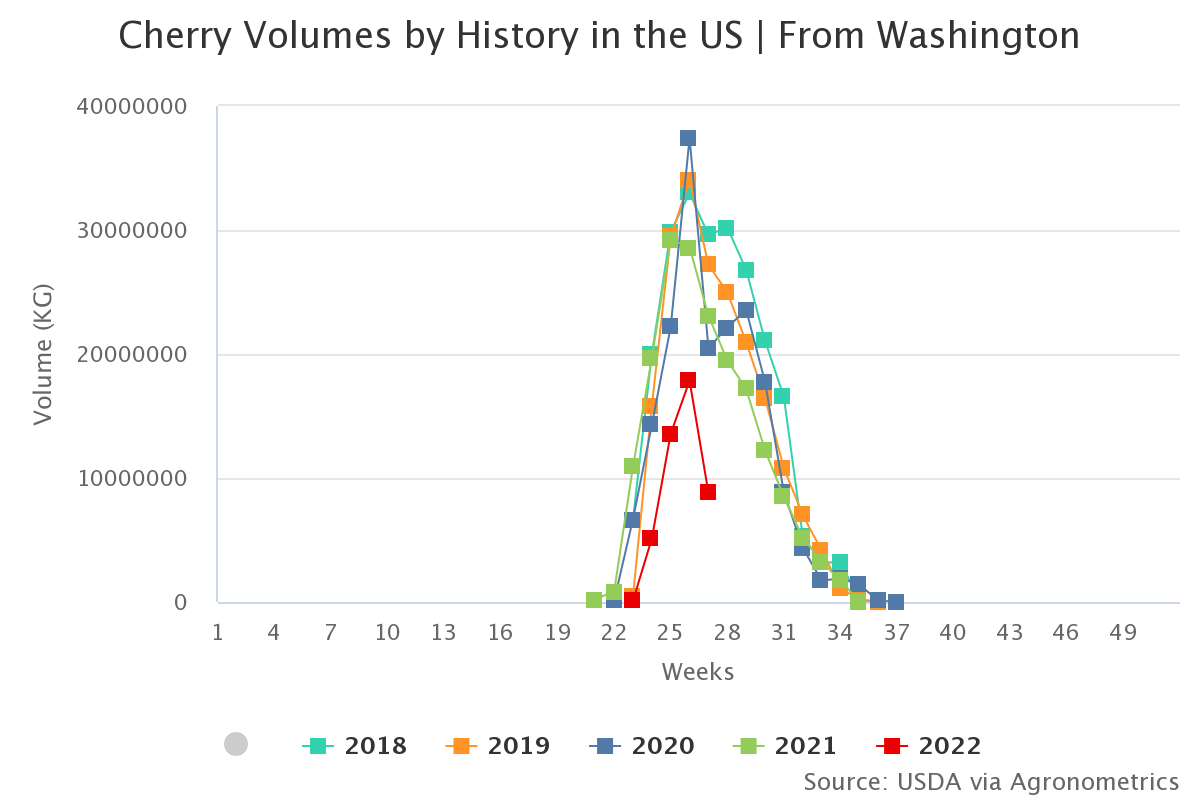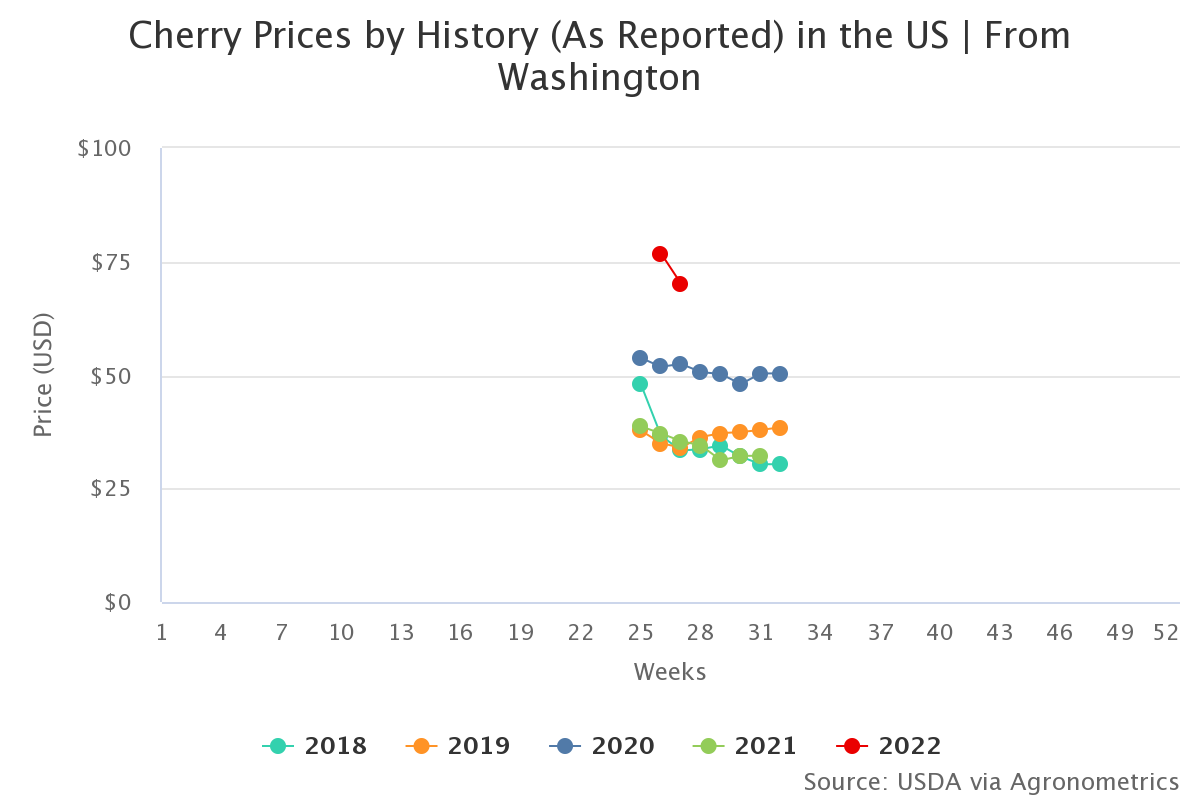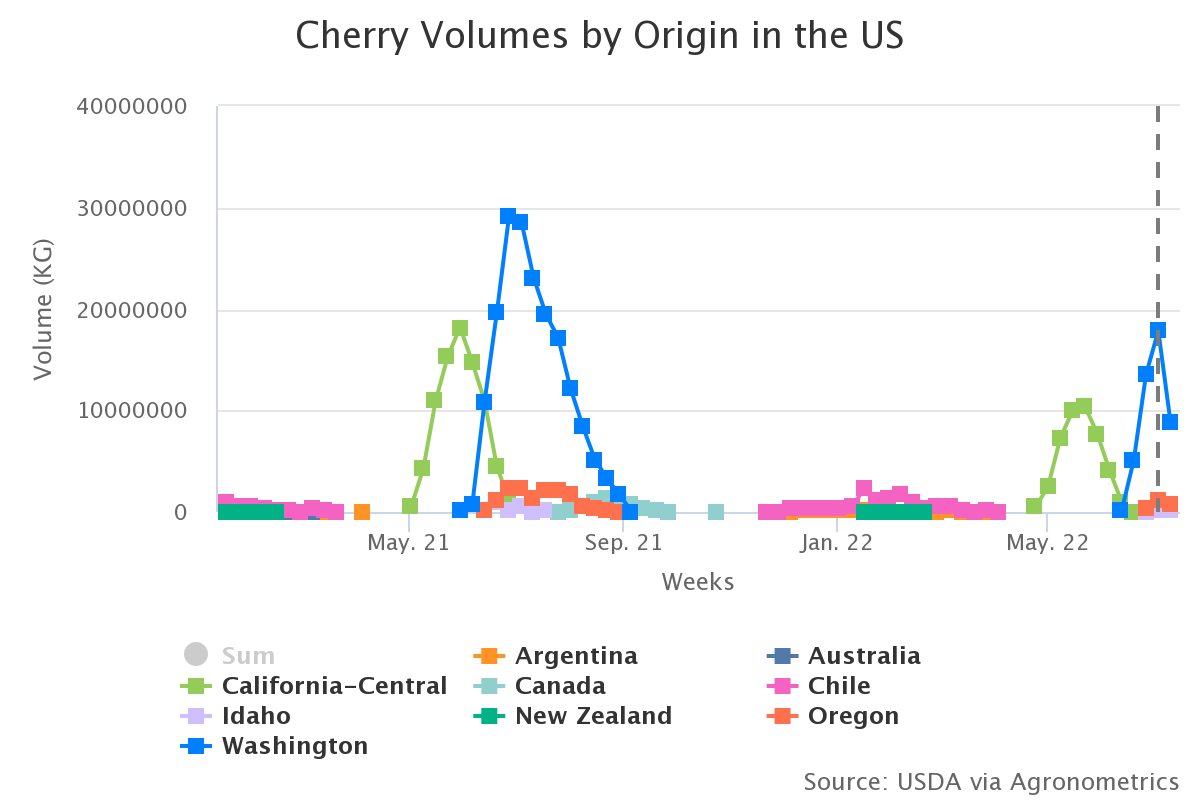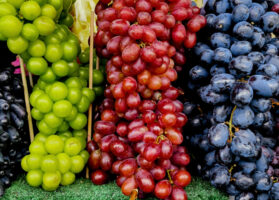Agronometrics in Charts: Northwest sees smallest cherry crop in nearly a decade
In this installment of the ‘Agronometrics In Charts’ series, Sarah Ilyas studies the state of the Washington cherry season. Each week the series looks at a different horticultural commodity, focusing on a specific origin or topic visualizing the market factors that are driving change.
Cherry growers in Washington state, who produce the majority of Northwest sweet cherries, often have to deal with adverse weather conditions — frost during the early months of 2020 or sweltering heat in late June last year that damaged ripening fruit.
This year, the cold and wet spring stunted the development of many cherries, leading to what looks to be the smallest crop of Northwest sweet cherries in nearly a decade.
“We’re forecasting between 50-60 percent of the crop, depending on the timing. The volume is down significantly and there’s still a whole lot of uncertainty because the weather has been pretty dicey up to date,” says Dan Davis with Starr Ranch Growers based in Wenatchee, Washington. Week 27 saw a total incoming volume of 8.8 K tonnes, a 65 percent drop compared to week 27 of 2021 that saw a total volume of 23 K tonnes coming in.

Source: USDA Market News via Agronometrics.
(Agronometrics users can view this chart with live updates here)
That will likely mean higher prices at local stores and markets. Additionally, with cherries taking longer to develop, harvest has been delayed by several weeks, implying that consumers in the Northwest and throughout the U.S. have to wait longer to get their hands on the juicy red fruit. Nearly 15 million 20-pound boxes are expected to come from growers in Washington, Oregon, Idaho, Utah and Montana, according to the latest estimate of the Northwest Cherry Growers, the Yakima-based marketing organization. If the estimate sticks, that would be nearly a quarter less than the 20.3 million boxes harvested a year ago and the smallest crop since 2013, when the region produced just 14.3 million boxes. Week 26 saw prices at $76.78 per package while week 27’s prices stood at $70.13 per package.

Source: USDA Market News via Agronometrics.
(Agronometrics users can view this chart with live updates here)

Source: USDA Market News via Agronometrics.
(Agronometrics users can view this chart with live updates here)
“Sizing is middle of the road. There will be some super large fruit sizes but as far as the bell curve goes, we’re right in the middle with 10.5-11 sizing for a large portion of the season,” says Dan Davis. Yet, despite the challenges, there’s still optimism for the season. “We’re looking forward to providing something different. It’s one of the most vibrant items in the produce department that everyone looks forward to seasonally,” adds Davis.
All pricing for domestic US produce represents the spot market at Shipping Point (i.e. packing house/climate controlled warehouse, etc.). For imported fruit, the pricing data represents the spot market at Port of Entry.
Written by: Sarah Ilyas






